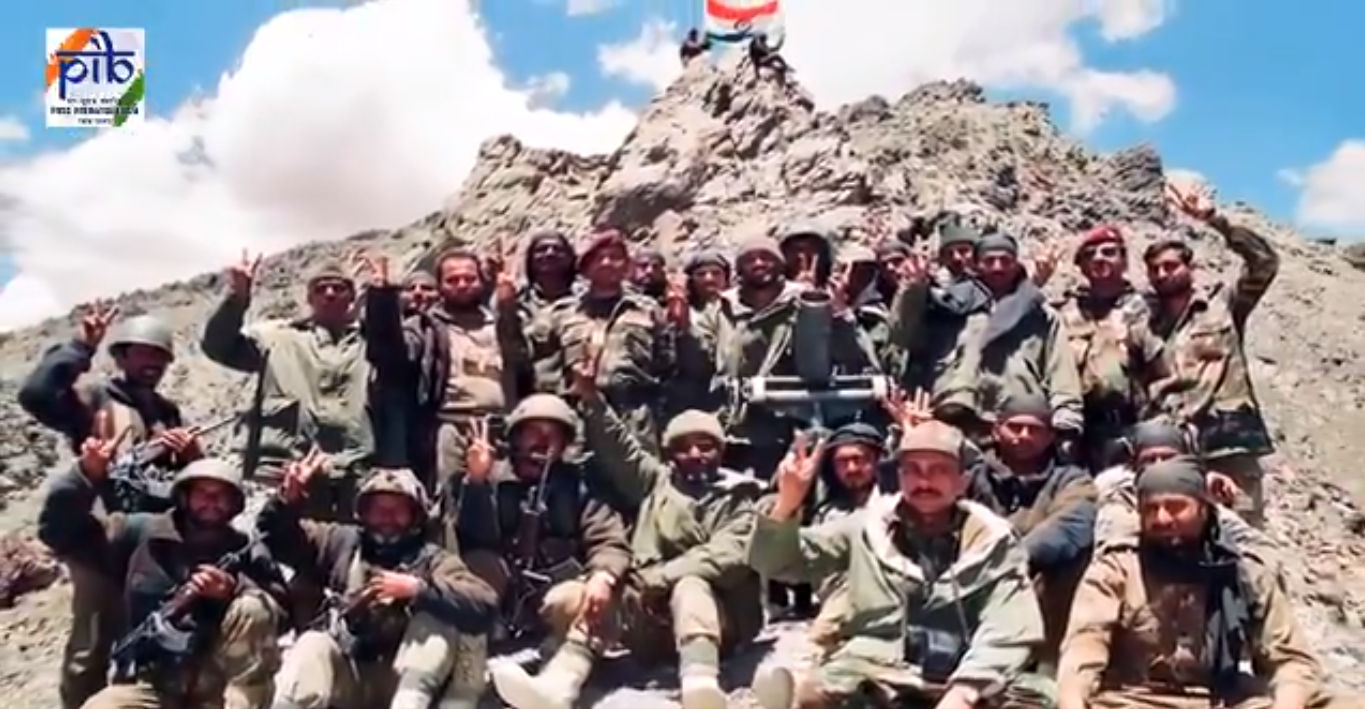July 26 is
commemorated as ‘Kargil Vijay Diwas’ every year in order to pay homage to the
sacrifices made by the heroes of the Indian Army to attain victory over
Pakistan and recapture all Indian territories in the Dras sector of Jammu and
Kashmir’s Kargil district. Tuesday marks the 23rd anniversary of the
end of the Kargil War.
In the war,
the Indian Army launched ‘Operation Vijay’ to recapture strategic posts that
had been occupied by Pakistani forces, who trespassed across the Line of Control
dressed as Kashmiri insurgents. The war was fought for 84 days from May 3 to
July 26, with hundreds of soldiers dying on both sides.
Also read: Woman who opened fire inside Dallas Love Field Airport identified as Portia Odufuwa
Why was the war fought?
It started
on May 2, 1999, when a local shepherd saw some men breaking stones and clearing
the snow. He noticed that there were no footprints in the snow leading to spot
where they were, making it obvious that they had come from the other side. He
informed the Indian Army of the same, who soon learned of the Pakistani plot to
capture strategic locations along the mountain ridges.
The intruders
did not wear uniforms and instead were clad in Pathani outfit, with Pakistan later denying their
involvement, claiming Kashmiri insurgents were responsible for the conflict.
However, documents retrieved from the intruders proved they were Pakistan
military personnel. They also gave medals to their soldiers for the conflict.
Also read: Flash Flood Warning issued in NYC, NJ: What we know so far
It is believed
the entire operation was the brainchild of then-Pakistan army chief Pervez
Musharraf, and that he orchestrated the conflict while keeping then-Prime Minister
Nawaz Sharif in the dark.
How was the war fought?
There were
three main phases of the Kargil War. The first being the intrusion by the Pakistan
military personnel into Indian-controlled Kashmir and capturing of a number of
key high points in the mountainous ridges.
The second
phases includes India capturing a number of key transportation routes into the
sectors with the Indian military pushing back the Pakistan forces back across the
Line of Control in the third phase.
Also read: Stephen Buyer, former Indiana Rep, arrested in insider trading case
The Indian
Air Force and Navy were involved in the warfare, launching ‘Operation White
Sagar’ and ‘Opearation Talwar’ to bomb fortified enemy positions and blockade Pakistani
ports respectively. The IAF had
reportedly asked to bomb target in Pakistan as well, but the request was denied
by then-Indian Prime Minister Atal Bihari Vajpayee.
The conflict
is an example of high-altitude warfare, with “furious artillery clashes, air
battles and costly infantry assaults by Indian troops against well dug-in
Pakistani forces” as noted by Bruce Riedel, a director in the former US president
Bill Clinton’s administration, in an Indian Express article available in the
MEA archives.
How many were killed in the war?
India
suffered considerable losses in the war, with 527 soldiers killed and at least
1,363 suffering injuries. On the Pakistani side, it is estimated that somewhere
between 357 and 453 soldiers were killed.
The aftermath
Four Param Vir Chakra and 11 Vir Chakra, India’s highest and third-highest military decorations, were among the awards given to Indian soldiers following the war.
India
increased its spending in the defence sector after the Kargil War. It also
completely overhauled its intelligence setup and significantly decreased the
average age of Armed Forces personnel, based on recommendations of the Kargil Review
Committee (KRC).
The KRC had
also recommended the creation of a new post – Chief of Defence Staff in 1999,
and it was created in 2020 , with General Bipin Rawat taking over as the first
CDS on January 1.
Additionally,
the Defence Intelligence Agency (2002) and the National Technical Research
Organisation (2004) were also created as reformative steps following the war.







